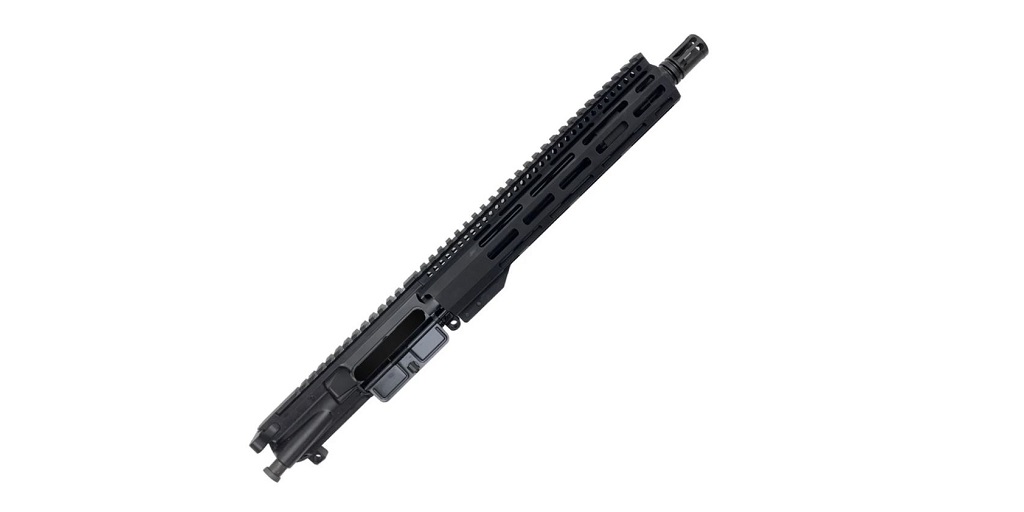On the Parts of an AR-15 Upper Receiver

You don’t need to be a gunsmith to know that most firearms are assembled around the receiver as the central component. That is, the receiver is the part that “receives” all of the other “pieces” of a gun, including the barrel, bolt carrier group (or other components of the action), trigger group, and stock.
The AR-15 build is slightly different. It consists of two different receivers, an upper and a lower. The lower receiver is the component that is classified by the ATF as a firearm, and is the part that accepts the trigger group, fire control unit, and buffer tube system which connects to the stock. The upper receiver, also known as an upper, connects to the lower and “receives” the barrel, gas system, and bolt carrier group (in addition to other parts and hardware).
Many “home builders” prefer to build their own rifles from scratch using a lower receiver blank and a jig kit.
To finish the kit, though, you’ll need to either build your own upper (from a stripped upper and a parts kit) or buy an assembled upper.
So, what does an assembled upper come with?
What Comes with an Assembled Upper?
One route you can take is to buy an assembled upper instead of a stripped upper and a parts kit. If you buy an assembled upper it should come with:
● The upper receiver itself: Forged or milled from a solid piece of aluminum, the receiver is the part that accepts all the others.
● The barrel: the AR-15 barrel is arguably the most important piece of the complete upper kit. Pay close attention to rate of twist, which will impact accuracy, and length, which will impact muzzle velocity (and barrel length is also impacted by regulation). Finishes also matter; some barrels are nitrided for durability, wear, and corrosion resistance.
● A charging handle and forward assist: These two parts enable you to manually cycle/close the action.
● Ejection port cover: A simple part that protects the action’s ejection port from sand, dust, and grit.
● A rail system: Most AR15 assembled uppers will come with a handguard and a rail system, which protects the barrel, serves as a grip, and enables you to expand the platform with attachments.
● A gas system (consisting of a gas block and tube): The gas system is responsible for the automatic cycling of the action.
● A muzzle device: Some AR15 complete upper receiver assemblies also come with a muzzle device, commonly a flash hider. Some builders, however, prefer the utility of a muzzle brake instead, as these help to control recoil and muzzle jump.
Sometimes, assembled uppers do not come with muzzle devices, forward assists, or ejection port covers. Make sure you double-check if the one you’re interested in does or not before you get it. You will also notice that this assembled rifle upper does not contain a bolt carrier group, which you will also need to complete the assembly of the gun.
Why an Assembled Upper?
It really all comes down to one thing: convenience. Buying an assembled upper instead of purchasing the components piecemeal can save builders time, and in some cases, even money.
However, some tinkerers actually enjoy the process of putting together their rifles from scratch. There is also more freedom involved in the process of doing it yourself entirely.
Therefore, some builders keep it that way and put together all of the components themselves.
Looking for Assembled, Stripped, and AR15 Pistol Uppers?
If you’re interested in building your own rifle or AR-15 pistol platform at home and are looking for assembled or AR15 pistol uppers, visit MCS Gearup at MCSGearup.com. They carry a wide range of upper kits, lower kits, and parts kits, along with a huge collection of shooting accessories.
Visit their website today.